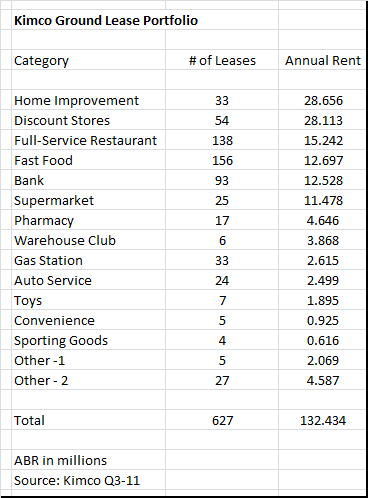How To Construct A HighRisk Portfolio
Post on: 1 Июнь, 2015 No Comment

A lot of investment advice centers on producing as much return as possible for as little risk as possible. But what about the other side of the coin? What about embracing the possibilities of risk and actively seeking to build a high-risk investment portfolio? Such a portfolio could hold considerable promise for market-beating returns, but investors need to keep a few ideas in mind when approaching this type of investment portfolio.
Why Seek Risk?
The linkage between risk and reward is not always perfect or predictable, but there is a time-tested correlation between risk and reward. If investors want higher returns, they have to be willing to take on higher risk. Said differently, though, if an investor can accept higher risk, he or she can also potentially realize considerably higher returns.
A low-risk/high-return portfolio is more often about fantasy (or fraud) than reality. Moreover, not all risk is bad for an individual investor. The key, then, is taking on the right risks. After all, risk only becomes problematic if, or when, an investor is wrong. There are also different ideas of risk; holding an all-cash portfolio is actually quite risky if that cash is being eroded by inflation. (Learn more about inflation in Coping With Inflation Risk .)
Large institutions cannot afford the risks that go with low liquidity. but that threshold is much lower for an individual. Even a small fund may be unable to invest in a $20 stock that trades 50,000 shares a day, but there is no reason that an individual investor cannot take on that liquidity risk. Likewise, many institutional investors cannot invest in low-priced stocks, pink sheet/bulletin board stocks or stocks in certain industries (particularly for certain ethical funds), but individuals have no such statutory restrictions.
It is also important to understand another key detail of high-risk portfolios – volatility is NOT risk. True, many academics and market participants do use volatility as a proxy for risk (beta. for instance), but in many respects volatility is a poor analog to risk. Risk, as most investors would define it, is either the probability of loss or the probability of an asset (or collection of assets) providing less than the expected return. (To learn how to calculate volatility, see A Simplified Approach To Calculating Volatility .)
Some stocks can go through wild up and down swings, but still produce handsome rewards for investors. In other cases some stocks just quietly and steadily fade into oblivion. In many respects, then, volatility is like the turbulence experienced on a plane ride, whereas risk is the actual chance of crashing.
Seek Out Smart Risk / Not All Risk Is the Same
One of the most important concepts in building a high-risk portfolio is that not all risk is the same. A close corollary is that investors should only seek out the smart risks, the risks they get compensated for taking. For instance, investing in the equity of bankrupt companies almost never pays off; yes the stocks trade for pennies and the companies often survive, but the bankruptcy process almost always completely wipes out equity investors and there is not enough wiggle room in that almost to validate the risk.
Investors should also guard against laziness and complacency. High-risk investing demands responsiveness and attention to detail. So while building a portfolio without thorough due diligence and then ignoring it is certainly high-risk investing, it is not a kind of risk that will earn extra rewards.
Risk-seeking investors also need to be smart about leverage. It’s all well and good to use leverage to ramp up the return potential of a portfolio, but investors should be careful to limit their maximum losses to a level they can afford. (Learn more about leverage in The Leverage Cliff: Watch Your Step .)
Types of High-Risk Portfolios
Concentrated
It is possible to create a high-risk portfolio without really changing investment styles. Heavily investing in a single sector/industry can certainly amp up risk and increase return potential. Investors who overweighted into technology stocks during the late 1990s (and got out in time) did quite well, as well as investors who successfully play cyclical commodity runs.
Perhaps it goes without saying, but this strategy is predicated on really understanding an industry well and having a good sense of the industry’s place in the business cycle. Likewise, it is important to have a good sense of market psychology and moods; overweighting an unpopular sector is not likely to boost returns. (For more information on this topic, see The Ups And Downs Of Investing In Cyclical Stocks .)
Momentum
Momentum investing is another option for a high-risk portfolio. The basic idea of momentum investing is to invest in stocks already showing strong price action. The risk from this strategy is often due to the above-average valuations that popular stocks carry, but expensive popular stocks can often trade up to very expensive or extremely expensive before fading.
Momentum investing requires strong sell discipline (using tight stop-losses when momentum fades, for instance). Investors can also look to diversify across sectors to lower absolute risk, but a general market decline will hit a momentum portfolio hard unless an investor is nimble enough to go short. (To learn more about momentum, see Riding The Momentum Investing Wave .)
Penny Stocks
Most financial information sites go to great lengths to dissuade investors from investing in penny stocks. highlighting the prevalence of fraud, corruption, and hype as well as the overall illiquidity of these stocks.
While those are valid issues, some times the enormous risks of this investment type do pay off. Penny stock investing requires exceptional commitment to due diligence, and diversification can help reduce the risks.














